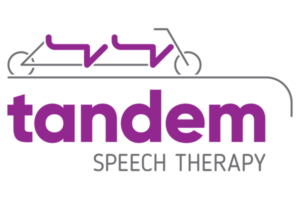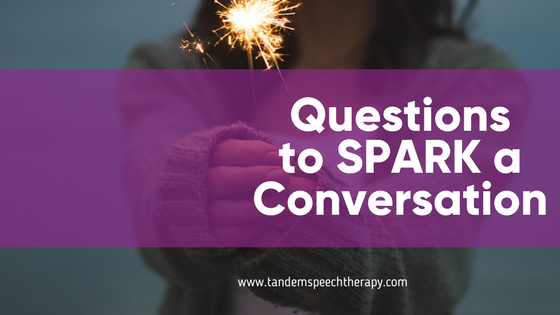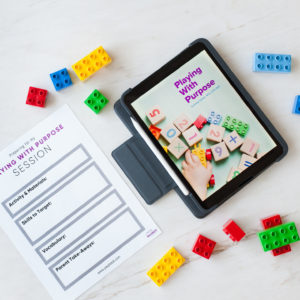You pick up your child from school and ask, “How was your day?” Your child replies, “I don’t know,” or “I don’t remember,” or even “fine.” You are not alone. I hear this from parents regularly, and even knowing as much as I do about speech and language skills, I have defaulted to asking close-ended questions and end up in frustrating conversations too.
Close-ended questions are those that have a one to two-word answer. They are questions that often have a right or wrong, either-or response. Close-ended questions do have their place, as sometimes you need facts or quick answers. Maybe you need to know if your child brushed their teeth after breakfast or which book they would like you to read to them before bed.
This pattern may be familiar to you. You ask your child a close-ended question like, “Did you have art today?” They respond, “Yes.” So you follow up with another question such as, “What did you do?” You are attempting to have a conversation with them, and your child responds, “Painting.” Inevitably, in your yearning for conversation, you ask another question. So next, you ask, “What did you paint?” and your child huffs and walks away. You are left feeling disconnected and disappointed.
To spark an engagement, we want to use open-ended questions with our kids. Open-ended questions do not have one correct answer. Often, they have many answers, and most importantly, they can inspire further conversation. I practice and teach asking children open-ended questions because they foster creativity and critical thinking skills.

Today is my 38th birthday. As a gift, I will offer you 38 open-ended questions (or statements) to spark a conversation with your child in a variety of situations.
- Tell me what happened!
- Show me what you can do with that.
- How does it work?
- Why did you choose that toy/book/activity?
- What could we have done instead?
- What was your (least) favorite part of your day? Why?
- What do you think this book will be about?
- What are you thankful for today? Why?
- How are you planning to do that?
- Why is it so important?
- What does this remind you of? Why?
- What are you most excited for at the party/school/restaurant? Why?
- What was the most challenging part of your day? Why?
- How can I support you with that?
- Can you describe what happened?
- Do you have any other ideas?
- How can we work together to solve this?
- What do you think will happen next?
- What did you notice happening?
- How would you feel if that happened to you?
- How are these two items the same? Different?
- What made you decide to pick this?
- How did this make you feel?
- How would you do it differently next time?
- How did you make it work?
- How can you work together?
- What do you see?
- Do you have any ideas?
- What are you thinking?
- How did you come up with that solution?
- What are you most proud of today? Why?
- What have you figured out?
- Can you tell me more about that?
- If you could change one thing about today, what would it be? Why?
- How do you know?
- What steps did you take to get there?
- How are you going to do that?

As the saying goes, I saved the best for last. Or at least it’s my favorite. I learned this phrase from an occupational therapist I worked for many years ago. I noticed one day she rarely asked the kids we were treating questions. Instead, she turned her questions into a statement that started, “I wonder.” This statement demonstrates curiosity to the child, and thus you engage their creativity or critical thinking skills.
The Benefits of Open-ended Questions:
- They encourage the child who is answering to think more thoughtfully and deeply.
- They invite more than a one-word response.
- Encourage a discussion; they do not make assumptions.
- Give control of the conversation to the person responding.
Get in touch and tell me how this practice is going for you! I’m here for support.
Start Playing With Purpose
Learn how to purposefully and intentionally interact with your child during play and help them increase opportunities for speech and language development with our Playing with Purpose book!











